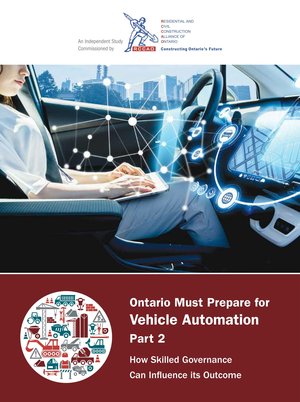Rise of automated vehicles spells doom for taxis and buses
![]() Print this Article | Send to Colleague
Print this Article | Send to Colleague
 Report author, Bern Grush, is a systems engineer and autonomous transit
strategist. He reminds us that less than 10 per cent of travel in North America
is taken in non-personally owned vehicles; however, by 2030, he predicts that
percentage will climb toward 25 per cent as more people turn to robo-taxis,
micro-transit and ride sharing. This is because automation will make these "new
mobility" systems more reliable and far cheaper than today’s taxi and bus
services — and cheaper even than personal ownership.
Report author, Bern Grush, is a systems engineer and autonomous transit
strategist. He reminds us that less than 10 per cent of travel in North America
is taken in non-personally owned vehicles; however, by 2030, he predicts that
percentage will climb toward 25 per cent as more people turn to robo-taxis,
micro-transit and ride sharing. This is because automation will make these "new
mobility" systems more reliable and far cheaper than today’s taxi and bus
services — and cheaper even than personal ownership.
Mr. Grush believes that improvements in vehicle automation, combined with the sharing economy, will vastly expand the robo-taxi and micro-transit juggernaut being readied by providers such as Uber, Lyft, Ford and GM for Ontario’s cities and towns. Recently, the Town Council in Innisfil contracted with Uber rather than investing in a traditional bus system. Mr. Grush expects that this type of disruption will spread to other municipalities.
The key to harnessing this technology is for governments and the private sector to work together to implement a regulatory system that will enhance mobility for all. In this new RCCAO report, Mr. Grush proposes a Harmonization Management System (HMS), which would provide the digital tools to incorporate a subsidy and pricing system, and optimize the deployment and social impact of commercial fleets. Government decision-makers would be able to continue ensuring that these publicly available services are as inclusive and accessible as possible.
Those who believe that the rise of AVs will reduce congestion should consider that there are many barriers to getting people out of their personal cars and into robo-shuttles or robo-taxis. These include: the safety and hygiene concerns of having young children in shared car seats; being disabled and travelling with assistive gear; driving with a pet; carrying work-related tools and accessories; and the fear that an automated car might not be able to take its owner everywhere (Mr. Grush calls this "access anxiety"). As these barriers are dealt with, the need for personal vehicles, as well as non-automated taxis and buses, will diminish over the next 15-25 years.
Finally, there is a lot of hype surrounding fully automated vehicles that can operate without a driver in every imaginable circumstance. Due to many hurdles, Mr. Grush does not anticipate the rise of this type of AV until well after 2050, when the technical edge-cases as well as legal and insurance issues of having driverless vehicles on public roads have been fully addressed.
We hope you find this research both illuminating and helpful in policy development.
Click here for a copy of the reportClick here for a copy of the press release
Click here to view the animated video

